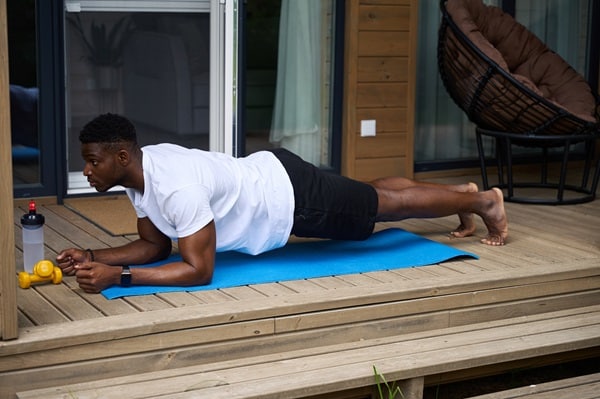Good posture is crucial for overall health and well-being, yet it is often overlooked in our daily routines. Poor posture can lead to various health issues, such as back pain, neck strain, and chronic headaches. As our lifestyles become more sedentary, maintaining proper posture becomes increasingly important. This article will explore the top exercises to improve your posture, helping you to achieve better alignment, reduce discomfort, and enhance your overall quality of life. By understanding the causes of poor posture, assessing your current state, and incorporating targeted exercises, you can make significant improvements in your posture and, consequently, your health.
Contents
Understanding Posture

Good posture involves maintaining the correct alignment of the body, which reduces strain on muscles and ligaments during movement and when stationary. It ensures that your spine is in its natural position, which helps in the efficient functioning of your body. Proper posture not only contributes to physical health but also enhances confidence and appearance. Understanding the fundamentals of posture is the first step towards making positive changes.
The anatomy of posture involves the alignment of the spine, from the neck down to the lower back, and the balance of muscle strength and flexibility. A well-aligned spine maintains its natural curves: the cervical (neck), thoracic (mid-back), and lumbar (lower back) curves. When these curves are properly aligned, your muscles and joints work more efficiently, leading to less fatigue and strain on your body. Maintaining good posture helps prevent the wear and tear on the joints and reduces the risk of injuries.
Causes of Poor Posture

A sedentary lifestyle and prolonged sitting are among the most common causes of poor posture. Many people spend hours sitting at desks or in front of screens, which can lead to slouched or hunched positions. Over time, these habits can cause muscle imbalances and weaken the muscles that support good posture. Additionally, poor ergonomic setups, such as inappropriate chair height or lack of lumbar support, can exacerbate these problems.
Muscle imbalances and weaknesses also contribute significantly to poor posture. For instance, tight chest muscles combined with weak upper back muscles can cause rounded shoulders, a common postural issue. Similarly, tight hip flexors and weak glutes can lead to anterior pelvic tilt, which affects the lower back. Poor habits, such as carrying heavy bags on one shoulder or consistently leaning to one side, can also disrupt proper posture. Lack of awareness about posture and how to maintain it further perpetuates these issues.
Assessment of Current Posture

Before embarking on a posture improvement journey, it is essential to assess your current posture to identify specific issues that need addressing. Self-assessment techniques like the mirror test and wall test can provide valuable insights. In the mirror test, you observe your reflection from the front and side to check for alignment issues such as rounded shoulders or forward head posture. The wall test involves standing with your back against a wall to see if your head, shoulders, and back touch the wall naturally.
Professional assessments can offer a more detailed analysis of your posture. Physical therapists and chiropractors are trained to identify postural problems and can provide personalized recommendations. Common posture problems identified through these assessments include rounded shoulders, forward head posture, and anterior pelvic tilt. Recognizing these issues is crucial as it allows you to focus on exercises that target your specific postural deviations, ensuring more effective improvement.
Stretching Exercises to Improve Flexibility

Flexibility is a key component of good posture, as tight muscles can pull your body out of alignment. Stretching exercises help to lengthen tight muscles, allowing your body to move more freely and maintain proper alignment. One of the most effective stretches for improving posture is the chest stretch, such as the doorway stretch, which helps open up the chest and counteract rounded shoulders. Upper back stretches, like the cat-cow stretch, can increase mobility in the thoracic spine and help maintain a neutral spine position.
Hip flexor stretches, such as the lunge stretch, are essential for addressing issues related to prolonged sitting, which often leads to tight hip flexors and anterior pelvic tilt. Hamstring stretches, like the seated forward bend, can alleviate tension in the lower back and improve overall posture. Incorporating these stretches into your daily routine can significantly enhance your flexibility, reduce muscle tightness, and support better posture. Consistent stretching not only improves physical alignment but also promotes relaxation and reduces stress.
Strengthening Exercises to Support Posture

Strong muscles are vital for maintaining good posture, as they provide the necessary support for your spine and joints. Core exercises, such as planks and the bird-dog exercise, are particularly important because a strong core stabilizes the spine and helps maintain proper alignment. Strengthening the back muscles with exercises like rows and the Superman exercise can counteract the effects of prolonged sitting and slouching, promoting an upright posture.
Shoulder exercises, such as shoulder blade squeezes and reverse flys, are effective in correcting rounded shoulders by strengthening the upper back and shoulder muscles. Lower body exercises like squats and bridges help to balance muscle strength around the hips and pelvis, supporting a neutral spine position. Incorporating these strengthening exercises into your fitness routine can create a balanced musculature, which is essential for sustaining good posture. Over time, increased muscle strength will make it easier to maintain proper alignment throughout daily activities.
Functional Posture Exercises

Functional posture exercises are designed to mimic everyday activities, helping to reinforce good posture habits in real-life situations. Wall angels are an excellent exercise for improving shoulder mobility and posture. Standing with your back against a wall, slowly raise and lower your arms in a “snow angel” motion while keeping your back and arms in contact with the wall. This exercise helps to align the shoulders and strengthen the upper back muscles.
The standing Y raise and resistance band pull-aparts are other functional exercises that promote good posture by engaging the muscles used in daily movements. The standing Y raise targets the upper back and shoulders, while resistance band pull-aparts help to strengthen the upper back and improve shoulder stability. The farmer’s walk, where you walk while holding weights in each hand, can enhance core stability and promote an upright posture. Incorporating these functional exercises into your routine ensures that the benefits of improved posture carry over into your daily life, making it easier to maintain proper alignment throughout various activities.
Tips for Maintaining Good Posture Daily

Maintaining good posture throughout the day requires conscious effort and awareness, but it can be significantly aided by making ergonomic adjustments. Start by ensuring your workspace is set up to support proper posture: adjust your chair so that your feet are flat on the floor and your knees are at a 90-degree angle. Make sure your computer screen is at eye level to prevent neck strain. Investing in an ergonomic chair with lumbar support can also make a big difference in maintaining the natural curve of your spine.
Incorporating regular posture checks and breaks into your daily routine can help prevent slouching and muscle fatigue. Set reminders on your phone or use posture apps to alert you to sit up straight and take breaks to move around. During these breaks, perform quick stretches or posture exercises to reset your alignment. Additionally, being mindful of your posture while engaging in everyday activities, such as walking, standing, and lifting, can reinforce good habits. Practicing mindfulness and body awareness can help you maintain good posture even when you’re not actively thinking about it, leading to long-term benefits.
Take Steps To Achieve Better Posture
Improving your posture is a journey that involves understanding its importance, recognizing the causes of poor alignment, and consistently practicing targeted exercises. By incorporating stretching, strengthening, and functional exercises into your routine and making mindful adjustments in your daily activities, you can achieve and maintain good posture. These efforts will not only enhance your physical appearance but also contribute to your overall health and well-being. Remember, small changes and consistent practice can lead to significant improvements over time. Embrace these habits and enjoy the long-term benefits of better posture.